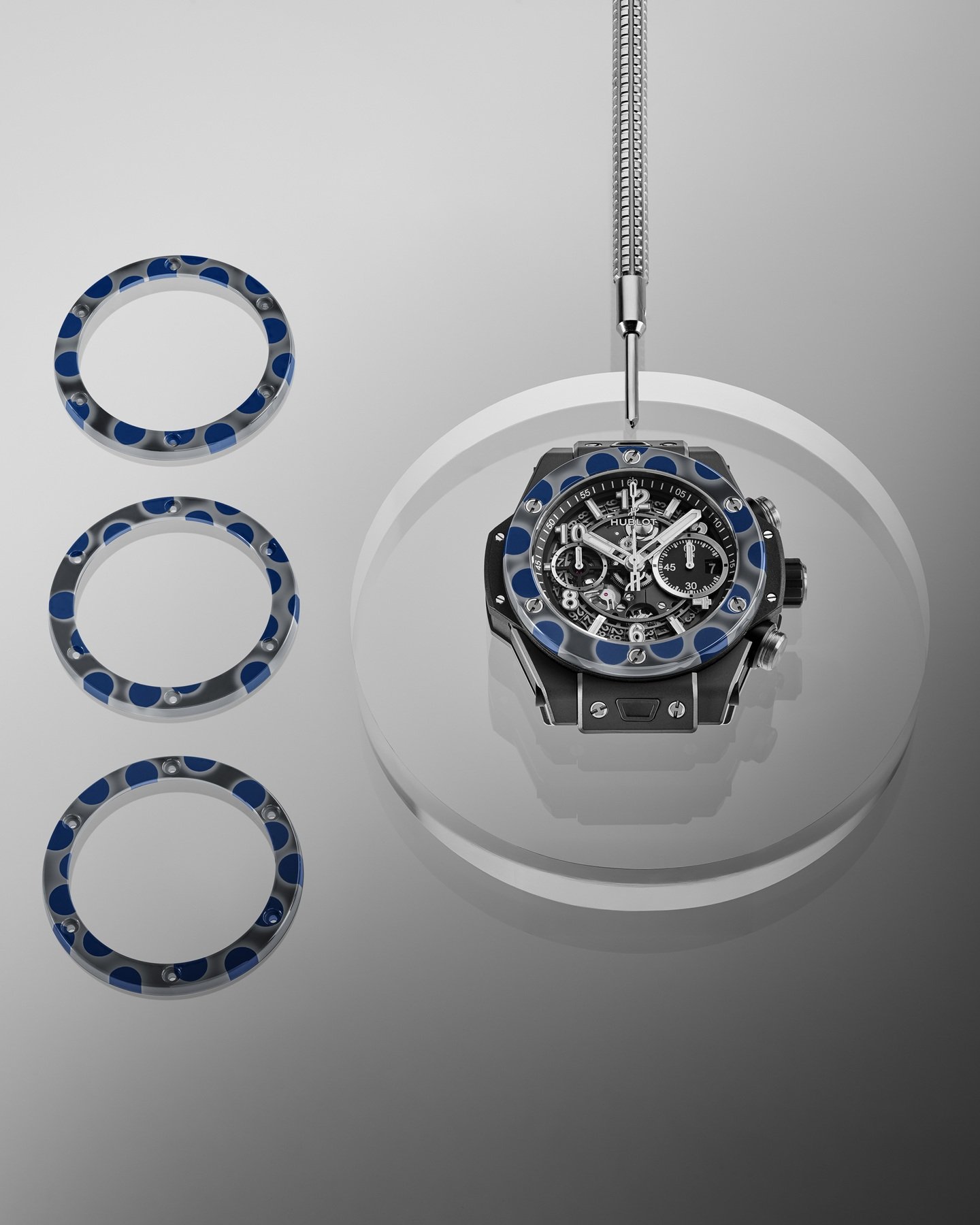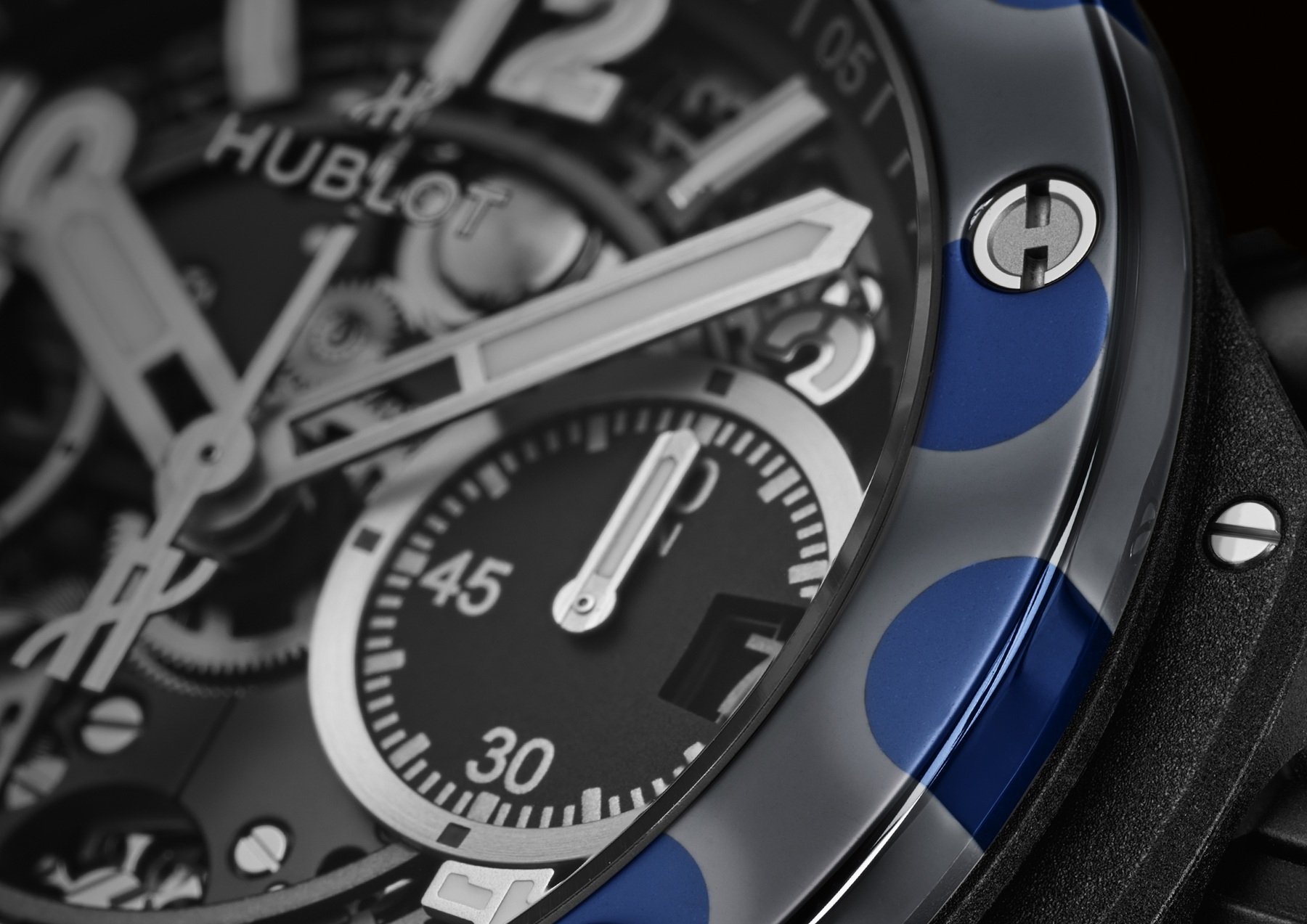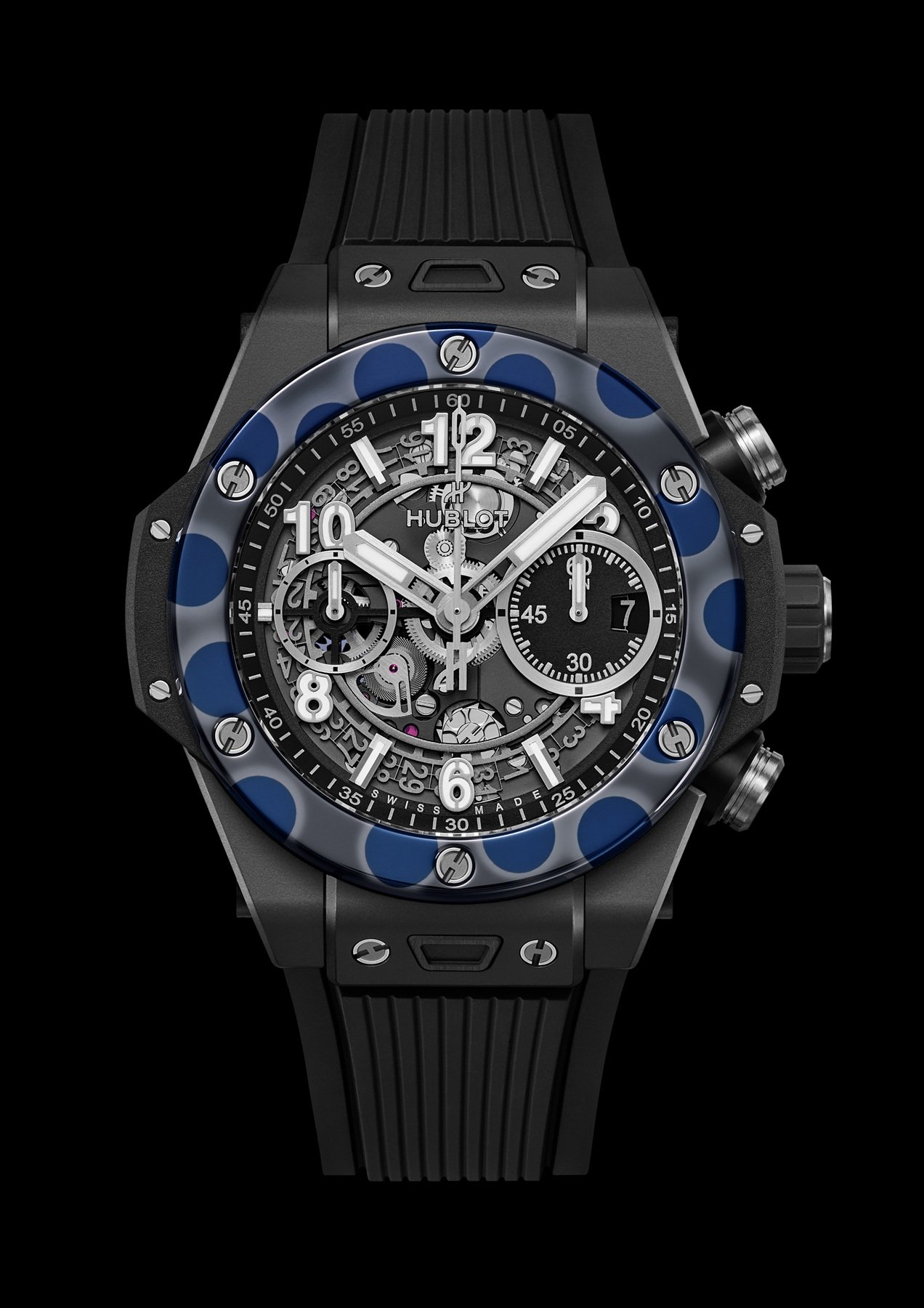Introducing: The Hublot Big Bang Unico Magic Ceramic — The First Production Watch Featuring Multicolored Ceramic
History repeats itself. You know of the debate about which automatic chronograph came first. Was Zenith’s El Primero, the Caliber 11 developed by Heuer, Breitling, Hamilton, and movement specialist Dubois Dépraz, or the Speedtimer by Seiko the first? Now we have a new case of “Who came first?” It involves two watches — the Hublot Big Bang Unico Magic Ceramic and the Audemars Piguet Royal Oak Offshore Chroma Ceramic. The “AP” was presented last year but is, for now, a prototype. The Hublot is not a prototype but a 20-piece limited edition. You be the judge of who’s first and takes the prize.
Last year, Audemars Piguet presented a couple of prototype watches with cases made by using Spark Plasma Sintering (SPS) technology. Without going into too much detail, this allows the designers to combine different tones of the same material, be it gold or ceramic. The sintering happens in a few minutes instead of several hours, creating a clear transition between the shades. In particular, the Royal Oak Offshore in monochromatic camouflage ceramic looked very cool. But you can’t buy it (yet) because it hasn’t reached the production phase. You can, however, now buy a watch with multicolored ceramic. It’s the Hublot Big Bang Unico Magic Ceramic. This is the first production watch featuring multicolored ceramic.
The Hublot Big Bang Unico Magic Ceramic has a controversial look
Before going into the details of how the Hublot Big Bang Unico Magic Ceramic was created, let’s address the elephant in the room or, rather, the Amanita muscaria, a mushroom commonly known as the fly agaric. Yes, the watch shows different colors, but the dots resemble the markings of the fly agaric you see in the picture taken by our very own Nacho, who does more than shoot watches in his spare time. The dotted pattern on the bezel of the Hublot is remarkable, controversial, and surprising, and it will undoubtedly spark strong reactions.
Hublot is no stranger to exotic materials. The brand also likes to create exclusive materials. King Gold and Magic Gold, for instance, are in-house alloys, and Hublot grows sapphire crystals and colors them in the Nyon facility to create cases. When it comes to ceramics and, specifically, colored ones, the brand has always been at the forefront. Hublot is now pioneering with a multicolored ceramic material dubbed Magic Ceramic. The expertise of Hublot’s R&D and Materials & Metallurgy teams has led to the creation of a type of ceramic that took lots of effort. The polished bicolor dark gray ceramic with twilight-blue dots bezel requires more than just a simple layering of pigments. Achieving a multicolored ceramic requires innovative thinking and a deep understanding of ceramics and how to reproduce colors.
Baking Magic Ceramic is a delicate process
Concocting and executing Magic Ceramic are no simple tasks. Each pigment used for color has to undergo different temperatures during the baking and molding processes of the ceramic components. Finding the perfect balance between time and temperature leads to a homogeneous result. Hublot’s new Magic Ceramic is born of a patent-pending process and is debuting in the Big Bang Unico Magic Ceramic, a limited edition of just 20 pieces. But don’t worry; there will undoubtedly be other Magic Ceramic models in the future.
The recently launched Big Bang Meca-10 comes in three versions, and I need to mention the one in Hublot’s Frosted Carbon. The black and gray shades of the carbon flakes give that watch a kind of camouflage look. Hublot wanted a different look for the Big Bang Unico Magic Ceramic. The pattern needed to be less random and have more contrast to show off the innovative creation process. And what’s more contrasting than polka dots? Hublot states that the creation process is just one of the countless possibilities for this innovation in ceramics. Choosing dots over a razzle-dazzle-inspired design is peculiar, if not baffling, but hey, it is what is.
Just like the fly agaric
The Hublot Big Bang Unico Magic Ceramic (€34,300 / US$33,000) has a 42mm × 14.5mm microblasted and polished black ceramic case with a 100m water resistance rating and Hublot’s One Click system for the black rubber strap. Its case back is executed in the same material, and the watch’s front and back are each outfitted with an AR-treated sapphire crystal. You can view the automatic in-house Unico movement, a flyback chronograph, through both crystals. The caliber’s gray finish pairs well with the dominant tone of the ceramic. Just the bezel is made of multicolored Magic Ceramic. This dark gray ceramic is combined with intense blue circles arranged in a seemingly random and organic (fly-agaric-like) pattern. The dots are seamlessly integrated with the rest of the ceramic thanks to the patent-pending process.
Now, I think using the Magic Ceramic polka dots just for the bezel and not every ceramic part of the watch was a good idea. Do you agree, or would you like to have seen more Big Bang polka dots for the buck? Let me know in the comments.







